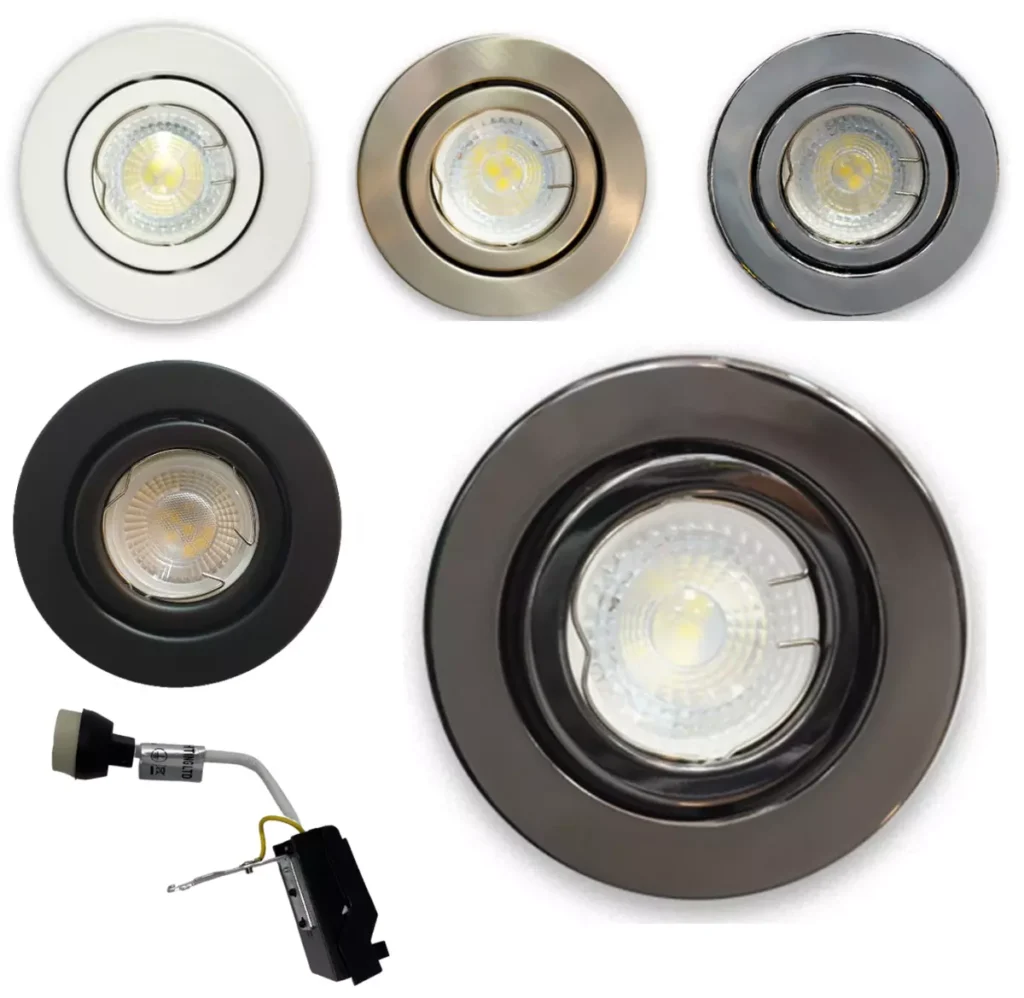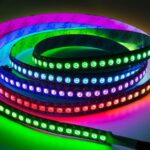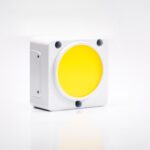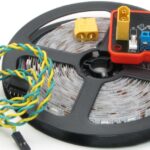
The Ultimate Guide to LED Spotlights: Illuminate Your Space with Energy-Efficient Brilliance
Have you ever felt a room lack a certain spark? Perhaps your artwork needs a touch of drama, or your workspace needs a focused illumination beam. Enter LED spotlights, the versatile lighting solution that packs a powerful punch. But with many options available, choosing the right LED spotlights can feel daunting.
Fear not! This in-depth guide equips you with all the knowledge you need to harness the brilliance of LED spotlights. Get ready to transform your space with the brilliance of LED spotlights.
What are LED spotlights?

LED spotlights, also known as track or directional lights, are lighting fixtures that utilize light-emitting diodes (LEDs) to cast a concentrated beam of light. Unlike traditional incandescent bulbs that emit light in all directions, LEDs focus their light output, creating a narrow and intense beam. This targeted illumination makes them ideal for highlighting specific areas, objects, or architectural features.
Benefits of Using LED Lights
Energy Efficiency: Compared to conventional spotlights that use halogen or incandescent bulbs, LED spotlights are champions of energy efficiency. They convert a significantly higher percentage of electrical energy into light, resulting in substantial energy cost savings.
Long Lifespan: LED spotlights boast an impressive lifespan, lasting anywhere from 25,000 to 50,000 hours—up to 25 times longer than incandescent bulbs! This translates to fewer replacements and reduced maintenance costs.
Environmentally Friendly: LED spotlights are free of harmful mercury and other toxins commonly found in traditional bulbs. Additionally, their lower energy consumption reduces your carbon footprint.
Exceptional Light Quality: LED spotlights deliver superior light quality with excellent color rendering, ensuring vibrant and realistic colors. Additionally, they offer a wide range of color temperatures, allowing you to create the perfect ambiance for any space.
Design Flexibility: LED spotlights come in various shapes, sizes, and finishes, seamlessly integrating with any decor style. They can be recessed, surface-mounted, or mounted on tracks, providing incredible design flexibility.
LED Spotlight vs. Traditional Spotlight: A Comparison
LED spotlights have several advantages over traditional spotlights, making them a preferred choice for many:
- LED spotlights are more energy-efficient, consuming significantly less electricity. This translates to lower energy bills and reduced environmental impact.
- LED spotlights have a longer lifespan, reducing the need for frequent replacements. This not only saves you money but also reduces waste.
- LED spotlights emit very little heat, making them safer and reducing the risk of fire hazards.
- LED spotlights offer a more comprehensive range of colors and designs, allowing for more creative lighting options.
While traditional spotlights may have merits, LED spotlights outperform them in terms of energy efficiency, longevity, and versatility.
Types of LED Spotlights
LED spotlights come in various types to suit different lighting needs. The most common types include:
1. MR16 LED Spotlights: These have a bi-pin base and are commonly used in track, recessed, and landscape lighting. MR16 spotlights are versatile and can be easily installed and replaced.
2. PAR LED spotlights: PAR, also known as Parabolic Aluminized Reflectors, are designed with precision for outdoor use. They are commonly found in floodlights and security lighting, where their narrow beam angle is ideal for highlighting specific areas, providing an assurance of effective illumination.
3. GU10 spotlights: These are typically used in the track, downlights, and accent lighting with their twist-lock base. One of their standout features is their excellent color rendering, which enhances the aesthetic value of any space. They are available in various beam angles to cater to different lighting needs.
4. AR111 LED Spotlights: AR111 is more prominent and often used in commercial settings, museums, and galleries. They provide a wide beam angle and are known for their superior light quality.
Choosing the correct type of LED spotlight is essential based on your specific lighting requirements and intended use.
Installing Process
Always consult a qualified electrician for complex installations. Below are the steps involved in the installation process.
Turn off the power: Locate the breaker box and switch off the circuit supplying the area where you’ll install the spotlights.
Mark and drill:
- Carefully mark the desired locations for your spotlights.
- Ensure proper spacing and alignment.
- Use a drill with an appropriate bit size to create holes for the spotlights and any necessary wiring.
Connect the wires: Following the manufacturer’s instructions, connect the wires from the spotlights to the power source, ensuring proper polarity (black to black, white to white). Use wire nuts or terminal blocks for secure connections.
Mount the spotlights: Secure the spotlights in the designated locations, following the manufacturer’s mounting instructions.
Test and adjust: Turn on the power and test each spotlight to ensure it functions correctly. Many spotlights offer adjustable heads, allowing you to direct the
Safety Note: Always double-check your connections and ensure everything is secure before turning on the power. If you need clarification on any aspect of the installation, consult a qualified electrician for assistance.
Maintenance and Care of LED Spotlights
LED spotlights require minimal maintenance compared to traditional spotlights. Here are some tips to ensure their longevity and optimal performance:

1. Regular Cleaning: Dust and debris can accumulate on the surface of LED spotlights, reducing their brightness. Clean the spotlights regularly using a soft cloth or a mild cleaning solution to remove dirt.
2. Avoid Overheating: LED spotlights are designed to emit very little heat, but excessive heat can still affect their performance. Ensure proper ventilation and avoid placing objects that can block airflow near the spotlights.
3. Check for Loose Connections: Periodically inspect the wiring connections of your LED spotlights to ensure they are secure and corrosion-free. Loose connections can result in flickering lights or complete failure.
4. Replace Faulty Spotlights: If you notice any LED spotlights not functioning correctly, replace them promptly to maintain consistent lighting throughout your space.
By following these simple maintenance practices, you can enjoy your LED spotlight’ long lifespan and optimal performance.
Conclusion
LED spotlights are the perfect lighting solution to illuminate your space with energy-efficient brilliance. They offer numerous benefits, including energy savings, longer lifespans, and versatile lighting options. Whether you’re looking to enhance your home’s interior, beautify your outdoor landscape, or improve home security, LED spotlights provide the perfect illumination.
By considering factors such as brightness, color temperature, and beam angle, you can choose the right LED spotlight for your specific needs. Follow the installation guide to quickly set up your LED spotlight and enjoy the benefits of efficient and beautiful lighting. Switch to LED spotlight and transform your space into a radiant oasis.
FAQs
Q: Are LED spotlights dimmable?
A: Not all LED spotlight are dimmable. Look for models labeled “dimmable” and ensure your dimmer switch is compatible with LED technology.
Q: Can LED spotlight be used outdoors?
A: While some LED spotlight are designed for indoor use only, others are weatherproof and suitable for outdoor applications. It’s essential to look for spotlights with an IP (Ingress Protection) rating; a higher IP rating indicates better weather resistance. This rating is a key indicator of the spotlight’s ability to withstand outdoor conditions, ensuring its durability and longevity.
Q: How much do LED spotlights cost?
A: The cost of LED spotlights varies depending on factors like brand, size, features, and beam angle. They are generally more expensive upfront than traditional spotlights. However, their energy efficiency and long lifespan translate to significant cost savings.
Q: How do I maintain LED spotlights?A: LED spotlights require minimal maintenance. To maintain optimal light output, simply dust them occasionally with a dry cloth.




